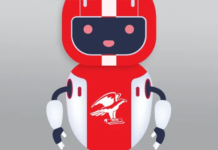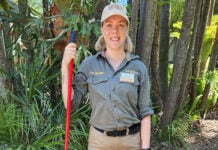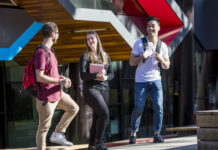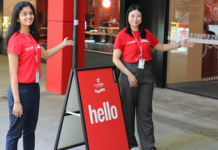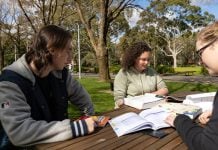Watch out students and staff, La Trobe has some new residents who are sure to be top of the pecking order!
Without feather (further) ado, we’d like to introduce you to our three new emus!
The emus were recently released into to the Nangak Tamboree Wildlife Sanctuary at our Melbourne (Bundoora) Campus.
The release of the emus is part of the University’s program to regenerate the 30-hectare (90-acre) nature reserve that is already home to hundreds of species of flora and fauna.
The introduction of the flightless birds gives La Trobe the rare honour of being the only Australian university city campus with three resident emus. Talk about another feather in our cap!
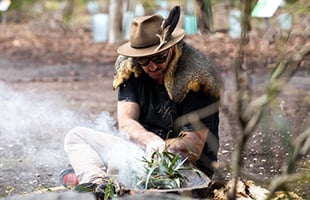
The 18-month-old emus replace two older emus who lived at the Sanctuary for more than 10 years and became local icons for students, staff and visitors, before they naturally passed away in recent years.
Sanctuary Operations Manager, Olivia Swain said they reintroduced emus to the Sanctuary not just because the previous residents were missed, but because the emus also play an important role in environmental sustainability at the Sancturary by managing weeds and supporting seed dispersal.
The emus were sourced from a local sustainable emu farmer and are all male, to make sure the population stays suitable for the size of the sanctuary.
As emus are considered iconic animals in Indigenous culture, they were welcomed to the Sanctuary with a smoking ceremony by local Wurundjeri elders.
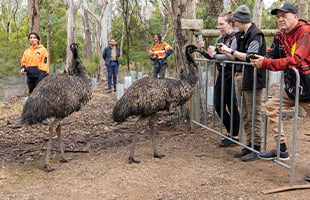
The emus, Australia’s largest native bird, were then released into the Sanctuary by La Trobe Vice-Chancellor Professor, Theo Farrell, and Pro Vice-Chancellor (Indigenous) Associate Professor, Michael Donovan.
Professor Farrell said the size and location of La Trobe’s Bundoora campus meant it could provide a safe home for a huge range of Australian flora and fauna.
“La Trobe is lucky to have this important refuge for endangered species of flora and fauna as part of its Melbourne campus,” Professor Farrell said.
To find out more about the Nangak Tamboree Wildlife Sanctuary and maybe even say ”hello” to our new emu friends, visit the Nangak Tamboree Wildlife Sanctuary webpage for more information.


